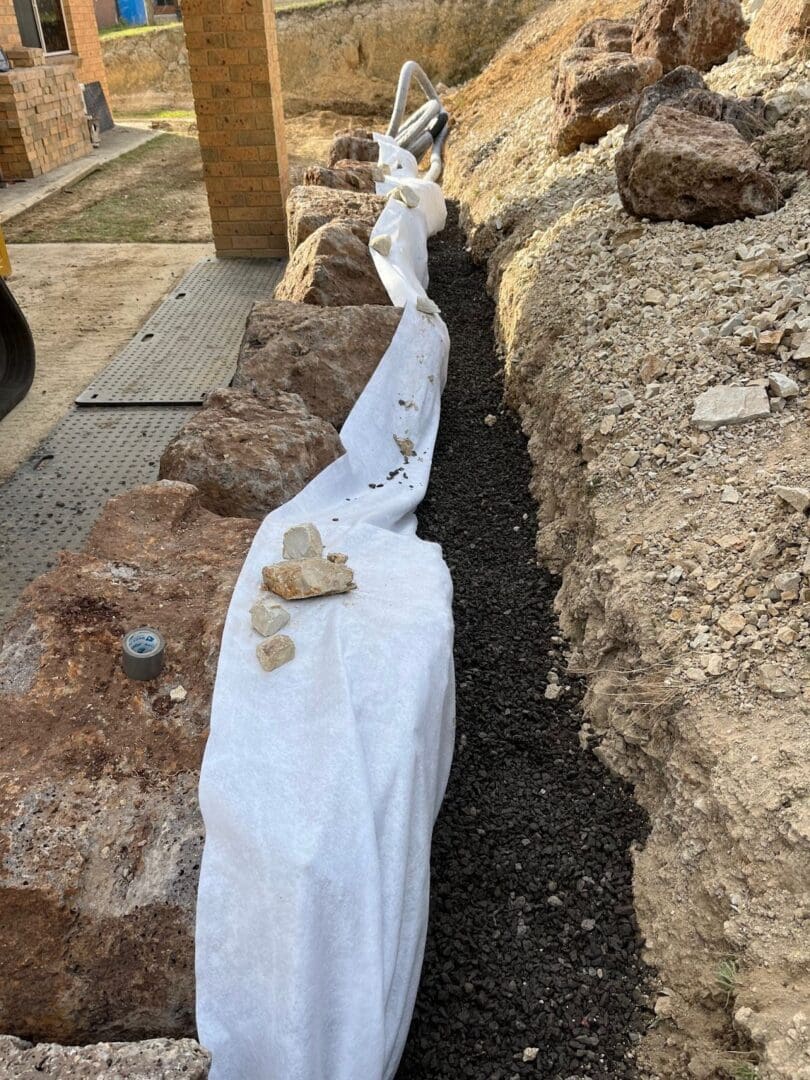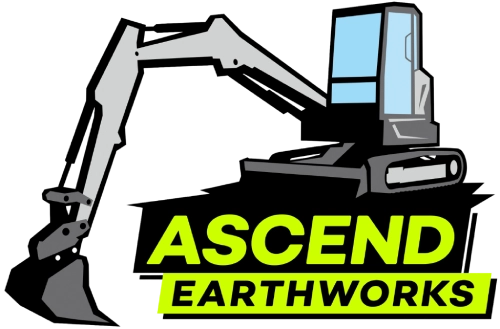
The Role of Drainage Systems in Rock Retaining Wall Durability
There’s more to building or maintaining a rock retaining wall than meets the eye. While the visual appeal and structural strength of the wall are generally highlighted, the subsurface drainage system is critical to guaranteeing its durability and longevity. Even the strongest walls can fail without appropriate drainage, so let’s look at how these systems are critical to the long-term stability of your retaining wall.
Why drainage is essential in stone retaining walls
Rock or stone retaining walls are commonly used to keep back dirt, particularly in sloped areas prone to erosion or shifting earth. The role of these walls is not just about keeping soil in place; they must also manage the water that naturally seeps into the ground. Without adequate drainage, water can accumulate behind the wall, considerably increasing the pressure it must withstand.
When water is left to accumulate behind a retaining wall, it can saturate the soil, transforming it into a heavier, less stable mass. This added hydrostatic pressure can overwhelm the wall’s structure, leading to cracks, bulging, or, in severe cases, a complete collapse. By managing water flow effectively, drainage systems alleviate this pressure and help the wall maintain its integrity.
How drainage systems work in retaining walls
Properly designed drainage systems are integrated directly into the wall and the surrounding landscape. These systems have one core objective: diverting water from the wall’s structure, thereby preventing soil saturation and pressure buildup.
Here’s a breakdown of the key elements that make up an efficient drainage system for a rock retaining wall:
-
Weep-holes
Weep-holes are small, strategically placed openings in the wall that allow water to escape behind the structure. These holes are often installed at the base of the wall and spaced evenly to provide consistent water release. Although they may seem small, these outlets play a significant role in maintaining the balance of moisture and pressure behind the wall. Without weep-holes, water would have no way to escape, leading to a buildup that could compromise the wall’s stability.
-
Gravel backfill
Most retaining walls, including rock walls, have a layer of coarse gravel behind them. This backfill material is essential because it allows water to flow easily, offering a buffer layer of sorts to prevent water from seeping beyond the retaining wall, in instances where water concentration becomes too high. Gravel backfill also keeps water from pooling directly against the wall, which could cause deterioration of the foundation. When paired with a drainage pipe or system, gravel is the first line of defence in groundwater control.
-
Drainage pipes
Perforated drainage pipes, known as “aggi pipes” in Australia, are another critical component of drainage systems. These pipes are installed at the retaining wall’s base and help channel excess water away from the area. They are often installed in a gravel trench, allowing water to flow into the pipe without clogging. Water drains through the soil and gravel backfill and is collected by the ag pipe before being channelled away, preventing water from accumulating behind the structure.
-
Geotextile fabric
Geotextile fabric is often placed between the gravel backfill and the surrounding soil. This synthetic material allows water to pass through but prevents soil particles from clogging the drainage system. It helps maintain the long-term effectiveness of the drainage system by keeping soil separate from the drainage materials. This fabric is especially useful in areas with fine or silty soils, which can readily obstruct water flow if not managed properly.
The consequences of poor drainage
Failure to install a suitable drainage system into your rock retaining wall can cause several structural problems, reducing the wall’s lifespan and effectiveness.
- Bulging and cracking: Excess water pressure behind the wall can cause it to bulge outward, and this continual force can eventually produce structural fissures.
- Foundation erosion: Without proper drainage, water can erode the foundation on which your retaining wall stands. This erosion weakens the base, making the entire structure more susceptible to shifting or settling, especially during heavy rains.
- Complete wall failure: In severe circumstances, the combination of hydrostatic pressure and foundation erosion can force the wall to collapse, which is both unsafe and costly to repair.
Partner with experts for reliable solutions
Ascend Earthworks specialises in the construction of long-lasting retaining walls. Our skilled staff guarantees that every wall we build is reinforced with an excellent drainage system, which will protect your investment for many years. Whether you need a new rock retaining wall or want to check the condition of an existing one, we can help. Contact us to discuss your project and ensure the lifespan of your retaining wall.
